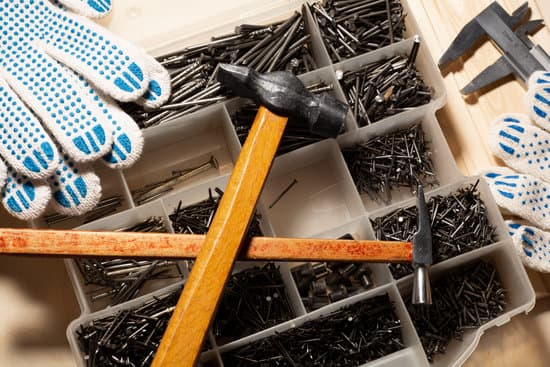Home improvement is an essential aspect of maintaining and enhancing the value of your home. Whether you want to renovate your kitchen, remodel your bathroom, or make any other necessary upgrades, it often requires a significant financial investment. This is where obtaining a loan for home improvement becomes crucial.
In this article, we will guide you through the process of getting a loan for home improvement. We will delve into the different loan options available and help you assess which one suits your needs best. From understanding eligibility criteria to preparing for the application process, we will provide you with all the necessary information to ensure a successful loan application.
Before diving into the nitty-gritty details, it’s important to recognize why home improvement matters and why financing may be necessary. Home improvements not only enhance the aesthetic appeal of your property but also increase its value in the real estate market. By investing in your home, you not only create a more comfortable living space but also potentially maximize its resale value in the future.
However, many homeowners find themselves facing a financial challenge when it comes to funding their dream home improvement projects. This is where securing a loan can be an invaluable solution. Whether you opt for a personal loan, home equity loan, or home equity line of credit (HELOC), understanding how to navigate through the borrowing process is vital.
Now that we understand the importance of home improvement and why financing may be needed, let’s continue exploring how to assess your specific needs and estimate costs accurately.
Assessing Your Home Improvement Needs
When embarking on a home improvement project, it is essential to first assess your needs and identify the specific areas of your home that require renovation. This step is crucial in determining the scope of work and estimating the cost involved. By carefully assessing your home improvement needs, you can ensure that you allocate your resources effectively and prioritize the areas that are most important to you.
Identifying Areas for Renovation
Start by examining each area of your home and making note of any issues or improvements you would like to address. Consider both functional and aesthetic aspects, such as outdated appliances, worn-out flooring, or inefficient insulation. Take into account any safety concerns as well, such as faulty wiring or plumbing issues. Additionally, think about how each area contributes to your overall satisfaction and comfort in your home.
Estimating the Cost
Once you have identified the areas that require renovation, it’s time to estimate the cost involved. Start by researching average costs for similar projects in your area. This will give you a rough idea of how much you can expect to spend on each improvement. Consider factors such as materials, labor, permits, and any additional expenses like design fees or contractor overhead costs.
To get a more accurate estimate, consider reaching out to local contractors or professionals who specialize in home improvement projects. They can provide detailed quotes based on your specific needs and preferences. Keep in mind that prices may vary depending on various factors like location, complexity of the project, and market conditions.
By accurately assessing your home improvement needs and estimating the associated costs, you will have a clearer picture of what kind of funding you may require. This knowledge will help guide you in finding the right loan option for your project budget.
Researching Available Loan Options
When embarking on a home improvement project, financing is often required to cover the costs. It is crucial to research and explore different loan options to find the best fit for your needs. In this section, we will discuss the importance of researching available loan options and provide guidance on how to do so effectively.
Financial Institutions
One option for obtaining a home improvement loan is through traditional financial institutions such as banks or credit unions. These institutions typically offer personal loans specifically designed for home renovations. To begin the process, it is advisable to approach several banks or credit unions and inquire about their loan products that are suitable for home improvements.
It is important to compare interest rates, terms, and fees associated with each loan offer. Additionally, consider the reputation and customer service of the financial institution before making a decision. Remember to ask about any specific requirements or eligibility criteria that need to be met in order to qualify for their loans.
Online Lenders
In recent years, online lenders have emerged as an alternative option for obtaining home improvement loans. These lenders provide convenience and flexibility by allowing borrowers to apply online from the comfort of their homes. The approval process is often faster compared to traditional financial institutions.
When considering online lenders, it is essential to research their credibility and reputation by reading reviews from previous customers. Look for lenders that specialize in home improvement loans and offer competitive interest rates and favorable terms. Conduct comparisons between different online lenders, ensuring you fully understand their repayment plans before making a decision.
Exploring both financial institutions and online lenders allows you to gain a comprehensive understanding of the available options. By conducting thorough research, you can evaluate each lender’s offerings and select the one that aligns with your needs, preferences, and financial situation.
By researching available loan options thoroughly – both at traditional financial institutions and online lenders – you can make an informed decision that best suits your needs and provides the necessary funds for your home improvement project.
Understanding Loan Types
When considering a home improvement project, one of the key factors to take into account is how to finance it. In this section, we will delve into the different loan types that are commonly used for home improvement projects and analyze their pros and cons.
The first type of loan to consider is a personal loan. Personal loans are unsecured loans that can be used for various purposes, including home improvements. One advantage of personal loans is that they are typically easier to obtain than other types of loans since they do not require any collateral.
Additionally, personal loans often have shorter repayment terms, which means you can pay off the loan faster. However, personal loans tend to have higher interest rates compared to other loan options.
Another option to consider is a home equity loan. A home equity loan allows homeowners to borrow money based on the value of their property minus any outstanding mortgage amount. The advantage of a home equity loan is that it generally offers lower interest rates compared to personal loans or credit cards.
Additionally, the interest on a home equity loan may be tax-deductible in some cases. However, keep in mind that using your home as collateral means that you risk losing your property if you are unable to repay the loan.
Lastly, there is the option of a home equity line of credit (HELOC). Similar to a home equity loan, a HELOC also uses your property as collateral. However, instead of receiving a lump sum like with a traditional loan or home equity loan, with a HELOC you have access to a line of credit that you can draw from as needed during a specified period known as the draw period.
One advantage of a HELOC is the flexibility it provides in terms of accessing funds whenever required. However, it’s important to exercise caution when using these funds and ensure responsible borrowing habits so as not to jeopardize your financial standing.
Understanding these loan types and their respective pros and cons will help you make an informed decision on which option is best suited for your home improvement project. It’s crucial to thoroughly review and compare the terms, interest rates, repayment plans, and potential risks associated with each loan type before making a final decision.
Eligibility Criteria and Requirements
When seeking a loan for home improvement, it is essential to understand the eligibility criteria and requirements that lenders consider before approving your loan application. By having a clear understanding of these factors, you can increase your chances of obtaining the financing you need for your renovation project.
Income and Employment Stability
One of the primary factors that lenders consider when evaluating a home improvement loan application is your income and employment stability. They want to ensure that you have a reliable source of income to make timely payments on the loan.
Lenders typically require borrowers to provide proof of employment, such as pay stubs or tax returns, to verify their income. Additionally, they may look at the length of time you have been with your current employer as an indicator of stability.
Credit Score and History
Another crucial factor that lenders assess is your credit score and credit history. Your credit score provides an indication of your creditworthiness and how likely you are to repay the loan responsibly. Lenders often set minimum credit score requirements for home improvement loans, with higher scores generally resulting in more favorable loan terms. It is important to check your credit report before applying for a loan and address any inaccuracies or issues that could negatively impact your credit score.
Debt-to-Income Ratio
Lenders also analyze your debt-to-income ratio (DTI) to determine if you can comfortably handle additional debt from a home improvement loan. The DTI compares your monthly debt payments to your gross monthly income. Ideally, lenders prefer borrowers with lower DTIs as it indicates they have more discretionary income available each month. It is advisable to pay down existing debts or increase income sources before applying for a home improvement loan to improve your DTI ratio.
Preparing for the Loan Application
Before applying for a home improvement loan, it is essential to ensure that you have all the necessary documentation and financial information in order. This will help streamline the application process and increase your chances of approval. Additionally, taking steps to strengthen your credit score can also improve your loan terms and interest rates.
To prepare for the loan application, start by gathering important documents such as proof of income, tax returns, bank statements, and identification. Lenders will typically require these documents to assess your financial stability and ability to repay the loan. Having them readily available will save you time and prevent any delays in processing your application.
Organizing your financial information is crucial as well. Create a detailed budget that outlines how much you need for your home improvement project and how much you can afford to borrow. This will help you determine which type of loan is most suitable for your needs and repayment capabilities.
One important aspect that lenders consider when approving loans is an applicant’s credit score. Take time to review your credit report and identify any discrepancies or errors that may negatively impact your score. Pay off any outstanding debts or bills to reduce amounts owed and improve your credit utilization ratio. Additionally, make sure to pay all future bills on time to maintain a positive payment history.
Overall, preparing for the loan application involves gathering necessary documentation, organizing financial information, and strengthening your credit score. Taking these steps before applying will not only simplify the process but also increase your chances of securing favorable loan terms and approval from lenders.
- Gather important documents such as proof of income, tax returns, bank statements, and identification.
- Create a detailed budget outlining how much you need for the home improvement project.
- Review your credit report for any errors or discrepancies.
- Pay off outstanding debts or bills to reduce amounts owed.
- Make all future bill payments on time to maintain a positive payment history.
Comparison Shopping
When it comes to obtaining a home improvement loan, comparison shopping is key. This section will discuss the importance of evaluating loan terms, interest rates, and repayment plans to find the best deal for your home improvement loan.
One of the first factors to consider when comparing different loan options is the interest rate. Interest rates can vary significantly between lenders, so it’s essential to shop around and find the lowest rate possible. A lower interest rate means less money paid over the life of the loan, resulting in more savings for you.
In addition to interest rates, it’s important to consider the repayment terms of each loan option. Some lenders may offer longer repayment periods with lower monthly payments, while others may have shorter terms with higher installments. Assess your financial situation and determine what repayment plan works best for you. Remember that longer repayment periods may result in paying more interest over time.
Furthermore, evaluate any additional fees or charges associated with each loan option. Some lenders may charge origination fees or prepayment penalties that can increase the overall cost of your loan. Make sure to read all the fine print and understand any potential fees before making a decision.
To make your comparison shopping easier, consider creating a list or matrix that includes key information for each lender you’re considering. This can include details such as interest rates, repayment terms, fees, and any other relevant information that will help you make an informed decision.
Overall, taking the time to compare different loan options will ensure that you find the best deal for your home improvement project. By evaluating loan terms, interest rates, and repayment plans carefully, you can save money and make an informed decision that suits your financial needs.
Applying for a Home Improvement Loan
When it comes to applying for a home improvement loan, it’s important to be well-prepared and organized. This step-by-step guide will walk you through the application process, provide tips on avoiding common mistakes, and offer advice for a successful borrowing experience.
- Research your options: Before starting the application process, take the time to research different lenders and loan options available to you. Compare interest rates, repayment terms, and fees associated with each loan type. This will help you identify the best loan option that suits your needs.
- Gather necessary documents: Lenders typically require certain documentation during the application process. Some common documents include proof of income (such as pay stubs or tax returns), identification documents (like a driver’s license or passport), proof of homeownership (deed or mortgage statement), and bank statements. Make sure to gather these documents in advance to speed up the application process.
- Check your credit score: Your credit score plays a crucial role in determining whether you’ll be approved for a home improvement loan. Lenders typically look for borrowers with good credit scores, as it demonstrates their ability to repay the loan on time. Before applying, obtain a copy of your credit report and check for any errors that could negatively impact your score. If necessary, take steps to improve your credit before submitting an application.
- Apply online or in person: Depending on your lender’s options, you may have the choice of applying online or in person at a branch location. Applying online is generally faster and more convenient but if you prefer face-to-face interaction or have specific questions, visiting a branch might be preferable.
- Complete the application form accurately: When filling out the application form, ensure that all information provided is accurate and complete. Double-check details such as employment history, income, and personal contact information. Any errors or missing information can delay the processing of your loan application.
- Review and submit: Before finalizing your application, carefully review all the details to ensure accuracy. Look for any errors or omissions and correct them before submitting the application. Once you are confident that everything is accurate, click submit or provide the completed application form to the lender.
By following these steps and avoiding common mistakes, you can increase your chances of a successful home improvement loan application process. Remember to maintain open communication with your lender throughout the process and ask any questions you may have. With careful planning and preparation, you’ll be one step closer to realizing your dream home improvement project.
Approval and Disbursement
After submitting your application for a home improvement loan, there are several steps you can expect to go through before the funds are disbursed. It is important to be familiar with this process so you can adequately plan for your home improvement project.
Once you have submitted your loan application, the lender will begin reviewing it and assessing your eligibility. They will evaluate factors such as your credit score, income, debt-to-income ratio, and the value of your home. This evaluation is crucial in determining whether or not you meet the criteria for approval.
If your loan application is approved, you will receive a loan offer from the lender outlining the terms of the loan. This offer will include information such as the interest rate, repayment period, and any fees associated with the loan. It is important to carefully review this offer and make sure you understand all aspects of it before accepting.
After accepting the loan offer, the lender will move forward with the disbursement process. Depending on the lender and their policies, funds may be disbursed in different ways. Some lenders may provide a lump sum payment directly to you, while others may pay contractors or suppliers directly for expenses related to your home improvement project.
It is important to note that some lenders may require proof of expenses before releasing funds. This means that you may need to provide documentation such as receipts or contracts showing how you plan to use the funds.
Overall, it is essential to be prepared for some waiting time between applying for a home improvement loan and actually receiving the funds. The approval and disbursement process can take anywhere from a few days to several weeks depending on various factors such as lender requirements and processing times. Patience and open communication with your lender will help ensure a smooth transaction.
| Expected Steps | Description |
|---|---|
| Loan Application Review | The lender evaluates your application and assesses your eligibility for the loan. |
| Loan Offer | If approved, you will receive a loan offer from the lender detailing the terms of the loan. |
| Acceptance of Loan Offer | You review and accept the loan offer, acknowledging the terms and conditions. |
| Disbursement Process | The lender initiates the disbursement process, releasing funds to you or directly to contractors/suppliers based on their policies. |
| Proof of Expenses | In some cases, lenders may require documentation showing how you plan to use the funds before releasing them. |
Taking on the Home Improvement Project
Taking on a home improvement project can be an exciting and rewarding endeavor. With the right planning and execution, you can transform your home into the space of your dreams. In this section, we will provide you with valuable tips on how to effectively manage and maximize the loan amount you have received for your home improvement project.
One important tip is to carefully prioritize your renovation needs. Assess the areas of your home that require immediate attention and determine which improvements will have the most impact. This will help you allocate your loan funds wisely and achieve the desired results within your budget constraints.
Another key tip is to obtain multiple estimates from reputable contractors before starting any work. This will allow you to compare costs and select the contractor that offers the best value for money. It is also essential to ensure that all contractors involved in the project are licensed, insured, and experienced in handling similar renovations.
Additionally, it is crucial to closely monitor the progress of your home improvement project to ensure that it stays on track both financially and timewise. Regularly communicate with your contractor, ask for updates, and address any concerns promptly. By staying actively involved throughout the process, you can avoid costly mistakes or delays.
| Tip | Description |
|---|---|
| Prioritize Your Renovation Needs | Determine which improvements are most important and allocate funds accordingly. |
| Obtain Multiple Contractor Estimates | Compare costs and select a reputable contractor that offers the best value for money. |
| Stay Actively Involved | Regularly communicate with your contractor and monitor the progress of the project to avoid delays or costly mistakes. |
By following these tips, you can effectively manage and get the most out of your loan amount for your home improvement project. Remember, proper planning, research, and communication are key to achieving your desired results within budget.
Repayment Strategies
Once you have obtained a home improvement loan and completed your project, it is important to have a repayment plan in place. Creating a realistic budget and developing a strategy will help ensure that you can comfortably pay off your loan without financial stress. Here are some tips to help you effectively manage the repayment of your home improvement loan.
The first step in creating a repayment plan is to assess your current financial situation. Take into account your income, expenses, and any other existing debts or obligations. By understanding your cash flow, you can determine how much you can allocate towards repaying the loan each month. It is important to be realistic and honest with yourself during this process as overcommitting financially could lead to unnecessary stress.
Next, create a budget specifically for your loan repayment. Allocate an amount from your monthly income that is both reasonable and affordable for you. Consider cutting back on discretionary expenses such as dining out or entertainment in order to free up additional funds for loan repayment. This budget should include not only the monthly installment but also any additional fees associated with the loan.
One effective strategy for paying off your home improvement loan faster is to make extra payments whenever possible. This can help reduce the overall interest paid over the life of the loan. Use any windfalls such as tax refunds or bonuses to make lump sum payments towards the principal amount.
Additionally, consider setting up automatic payments so that you never miss a payment deadline. This way, you can avoid late fees and ensure that you stay on track towards becoming debt-free.
Overall, creating a realistic budget and developing a solid repayment plan are crucial steps in successfully paying off your home improvement loan. By being proactive and disciplined with your finances, you can achieve peace of mind knowing that you are steadily making progress towards clearing this debt. Remember that managing debt responsibly is an important aspect of maintaining financial stability and achieving your long-term goals.
Conclusion
In conclusion, obtaining a loan for home improvement projects can provide homeowners with the financial resources needed to achieve their dream renovations. Throughout this article, we have discussed the importance of home improvement and the various financing options available. By assessing your needs, researching loan types and lenders, understanding eligibility criteria, preparing for the application process, and performing comparison shopping, you can find the best loan deal for your home improvement project.
It is crucial to be proactive in taking action towards your dream home improvement projects. With careful planning and budgeting, you can make significant enhancements to your living space and increase the value of your property. Remember to gather all necessary documentation, organize financial information, and strengthen your credit score prior to applying for a loan.
Once approved and funds are disbursed, it is important to manage the home improvement project efficiently. Maximize the loan amount by prioritizing essential renovations and ensuring that they are completed within budget. Additionally, it is vital to develop a realistic budget and repayment plan to ensure that you can comfortably pay off the home improvement loan without straining your finances.
Frequently Asked Questions
Are renovation loans a good idea?
Renovation loans can be a good idea depending on your specific situation and needs. These loans are designed to help homeowners finance the cost of renovating or remodeling their homes. They typically have lower interest rates than personal loans or credit cards, making them a potentially more affordable option for funding home improvements.
However, it’s important to consider the terms and conditions of the loan, including any fees or closing costs involved. Additionally, renovation loans may require appraisals and inspections to ensure that the borrowed money is being used for approved renovations, so it’s important to carefully plan your project and budget before applying.
What is the difference between a home loan and a home improvement loan?
The main difference between a home loan and a home improvement loan lies in their intended use. A home loan, also known as a mortgage, is used to finance the purchase of a property. It typically involves borrowing a large sum of money that will be repaid over an extended period of time, often 15 to 30 years.
On the other hand, a home improvement loan is specifically geared towards funding renovations or repairs on an existing property. These loans are often smaller in amount and have shorter repayment terms compared to traditional mortgages. Home improvement loans can be either secured (backed by collateral such as your home) or unsecured (based on your creditworthiness).
How to finance a home addition without equity?
Financing a home addition without equity can be challenging but not impossible. One option is to explore personal loans from banks or online lenders.
Personal loans are unsecured debts based on your creditworthiness rather than tied to any specific collateral like your home equity. These loans may have higher interest rates than other financing options, but they offer flexibility in terms of use and aren’t dependent on your current equity position.

I’m thrilled to have you here as a part of the Remodeling Top community. This is where my journey as an architect and remodeling enthusiast intersects with your passion for transforming houses into dream homes.





